Best Tree Planting Initiatives: The Good, the Bad and the Ugly
- September 24, 2024
- 0 comment
Tree planting initiatives have surged in popularity as a solution to tackling climate change and boosting biodiversity. While these efforts are often viewed positively, they come with complexities that must be carefully considered. Not all projects are equally effective, and poorly planned initiatives can sometimes cause more harm than good.

Understanding the full scope of tree planting efforts is crucial in determining whether they result in meaningful environmental benefits. A well-executed plan can greatly contribute to ecosystem restoration, while poorly managed projects risk disrupting local environments and wasting resources.
Table Content for Tree Planting Initiatives List:
- The Good: Success Stories and Positive Impacts
- The Bad: Common Shortcomings in Tree Planting Initiatives
- The Ugly: Examples of Tree Planting Gone Wrong
- How to Do Tree Planting Right
A Brief History of Tree Planting Across Civilizations
Humans have planted trees for millennia, from ancient China’s forest services to the Roman Empire’s use of conifers for timber. Indigenous Amazonian populations also domesticated tree species, shaping the rainforest. Historically, tree planting served practical needs, such as timber and soil protection. Recently, global attention has shifted towards large-scale reforestation, with initiatives aiming to combat climate change through carbon sequestration. However, concerns have arisen regarding the effectiveness of these efforts, particularly following the criticisms of high-profile campaigns like the World Economic Forum’s One Trillion Trees Initiative.
Current Tree Planting Initiatives
Tree planting efforts today range from nonprofit organizations working with corporations to broader conservation entities incorporating reforestation. Companies often pledge to plant trees for every product sold, partnering with NGOs. Some countries have also committed to global initiatives, such as the World Economic Forum’s One Trillion Trees campaign, aiming to grow, restore, and conserve trees worldwide by 2030. Other organizations, like The Nature Conservancy and One Tree Planted, focus on large-scale projects aimed at combating climate change and biodiversity loss through targeted tree planting efforts.
| Initiative | Target (Trees/Seedlings) | Pledge Timeframe | Cost per Tree |
|---|---|---|---|
| World Economic Forum: One Trillion Trees | 1 trillion trees globally by 2030 | By 2030 | Varies by project/location |
| Nature Conservancy: Plant a Billion Trees | 1 billion trees worldwide | Ongoing | $1+ per tree |
| Trees for the Future | Agroforestry, millions of trees planted | Ongoing | Varies |
| Arbor Day Foundation | Millions annually | Ongoing | Depends on partnership |
| One Tree Planted | Millions of trees globally | Ongoing | $1 per tree |
| Trillion Tree Campaign | 1 trillion trees (aggregated from partners) | Ongoing | Public donations |
| Reforest Now | Thousands of trees in Australian rainforests | Ongoing | $5 AUS per tree |
| Pakistan’s 10 Billion Trees Tsunami | 10 billion trees in Pakistan | By 2030 | Government-funded |
| Saudi Arabia’s Let’s Make it Green | 10 million trees | Ongoing | Government-funded |
| Ethiopia’s National Initiative | 5 billion seedlings | 2020 and ongoing | Government initiative |
| Ireland’s 22 Million Trees Pledge | 22 million trees annually for 20 years | By 2040 | Government initiative |
The Good: Success Stories and Positive Impacts
Tree planting, when done thoughtfully and strategically, can provide significant benefits for the environment, local communities, and global biodiversity. Here are some of the major advantages of well-planned tree planting initiatives:

- Carbon Sequestration: One of the most celebrated aspects of tree planting is its ability to sequester carbon. Trees absorb carbon dioxide from the atmosphere and store it in their biomass, helping reduce the amount of greenhouse gases contributing to global warming. In regions with significant deforestation or degradation, tree planting can serve as a tool for carbon offsetting.
- Biodiversity Enhancement: Properly executed tree planting initiatives, which prioritize native species and ecosystem restoration, can significantly enhance biodiversity. Planting a diverse range of species can restore habitats for animals, insects, and plants, reviving entire ecosystems. Programs like the Black Lion Tamarin Conservation Program in Brazil’s Atlantic Forest have shown remarkable success in increasing biodiversity and restoring ecosystems.
- Community Empowerment: Some tree planting programs have also succeeded in empowering local communities by providing education, income, and food security. For instance, Brazil’s reforestation efforts in the Atlantic Forest engaged rural communities, teaching them about sustainable forestry practices and improving their livelihoods, which, in turn, strengthened forest conservation efforts.
- Soil and Water Conservation: Planting trees can also improve soil quality by preventing erosion and increasing water retention. Certain tree species help maintain healthy soil by restoring nutrients and organic matter. Additionally, forests play a vital role in maintaining water cycles, protecting watersheds, and regulating water supplies for surrounding areas.
The Bad: Common Shortcomings in Tree Planting Initiatives
While the intent behind most tree planting initiatives is positive, poor execution and lack of scientific understanding can lead to unintended negative outcomes. Here are some of the common pitfalls seen in less successful tree planting programs:

- Monocultures and Non-Native Species: One of the most significant problems is the tendency to plant monocultures or non-native species. While monocultures may appear to fulfill the tree-planting goal, they fail to support local biodiversity and often lead to sterile ecosystems. For instance, eucalyptus, frequently used in tree planting programs, is highly invasive, provides little benefit to wildlife, and consumes large amounts of water. Programs that focus on fast-growing, profitable tree species rather than native, diverse plantings fail to create resilient ecosystems.
- Short-Term Focus on Numbers: Many initiatives prioritize the number of trees planted, often failing to ensure the long-term survival of these trees. While planting 1,000,000 trees might sound impressive, if a majority of those trees die within the first year due to poor planning, lack of maintenance, or unsuitable conditions, the initiative becomes largely symbolic with little environmental benefit. An example of this is Turkey’s 2019 tree planting initiative, where 11 million trees were planted, but most did not survive due to poor planning and a lack of water.
- Greenwashing Concerns: Corporate involvement in tree planting has grown, with many brands boasting about their reforestation efforts as part of their sustainability goals. However, some companies use tree planting as a form of greenwashing, promoting these initiatives while continuing to engage in environmentally harmful practices. This can create a false impression of sustainability, diverting attention from more critical systemic changes needed to address climate change and environmental degradation.
- Ignoring Local Ecosystems: Some large-scale tree planting initiatives fail to take local ecosystems into account, planting trees in areas where they disrupt native landscapes, such as savannas or grasslands, which are important carbon sinks in their own right. These efforts can lead to habitat destruction rather than restoration, as seen in various campaigns across Africa, where savannas were replaced with tree plantations.
The Ugly: Examples of Tree Planting Gone Wrong
Despite the best intentions, there have been instances where tree planting has caused more harm than good due to poor planning, lack of understanding of local ecosystems, or financial incentives that led to counterproductive results. Below are examples of tree planting initiatives that have backfired:

- Eucalyptus in Africa and South America: As mentioned earlier, eucalyptus is often planted for its fast growth and commercial value. However, its introduction into non-native environments in Africa and South America has led to severe consequences, such as biodiversity loss, depletion of water resources, and increased fire risks. The focus on planting profitable trees instead of restoring natural forests has created imbalanced and unsustainable ecosystems.
- Mexico’s Sembrando Vida Initiative: This well-intentioned $3.4 billion reforestation campaign aimed to pay farmers to plant trees on their land. Unfortunately, it led to widespread deforestation, as farmers cleared native forests to make room for tree planting, resulting in a net loss of forest cover. The program’s financial incentives encouraged behavior that was ultimately detrimental to the environment.
- India’s Failed Reforestation Efforts: Over the past 50 years, India has invested heavily in tree planting, with disappointing results. Satellite imagery and research have shown that many of the seedlings planted have not survived, and in some cases, inappropriate species were used, leading to reduced forest canopy and a loss of trees vital to the local population’s livelihoods. This failure highlights the importance of understanding local ecosystems and community needs when undertaking large-scale reforestation.
- Turkey’s 2019 Tree Planting Campaign: In an effort to combat climate change, Turkey planted 11 million trees on a single day. However, by the following spring, a large percentage of these trees had died due to insufficient rainfall and a lack of follow-up care. This failure underscores the need for long-term planning and maintenance in tree planting initiatives.
How to Do Tree Planting Right
Given the potential pitfalls, how can tree planting be done correctly to ensure it has a meaningful, long-lasting impact on the environment?

- Prioritize Native Species and Ecosystem Restoration: The focus should be on planting native trees that restore natural ecosystems rather than fast-growing, commercially viable species. Efforts should be made to reestablish diverse ecosystems that provide habitats for a wide range of species, enhance biodiversity, and support ecosystem services like water regulation and soil restoration.
- Long-Term Commitment and Monitoring: Tree planting is not just about putting seedlings in the ground; it requires long-term commitment. Initiatives need to include plans for the care and maintenance of planted trees, as well as ongoing monitoring to ensure their survival and the health of the surrounding ecosystem.
- Engage Local Communities: Successful reforestation efforts involve local communities at every stage, from planning to execution. This ensures that tree planting initiatives meet the needs of the community, provide economic benefits, and gain the local support necessary for long-term success. Community-led efforts are more likely to result in sustainable and resilient ecosystems.
- Consider Alternative Conservation Methods: In some cases, natural regeneration may be more effective and sustainable than planting new trees. Allowing nature to reclaim degraded land through natural processes can often lead to healthier, more diverse ecosystems at a lower cost. Assisted natural regeneration, where minimal intervention helps speed up the process, can also be an effective strategy in some environments.
Final Concluding Thoughts
Tree planting initiatives offer incredible potential to combat climate change and restore ecosystems, but they must be approached with care and consideration. When done right, tree planting can sequester carbon, enhance biodiversity, and support local communities. However, poorly executed programs can cause more harm than good, leading to biodiversity loss, ecosystem disruption, and wasted resources. The future of tree planting lies in thoughtful, science-based strategies that prioritize ecosystem health, community involvement, and long-term sustainability.
Frequently Asked Questions (FAQs)
- Why are tree planting initiatives important?
Tree planting helps sequester carbon dioxide, reduce climate change impacts, restore ecosystems, and improve biodiversity. Trees also support soil health, regulate water cycles, and offer economic and social benefits to communities. - What are the benefits of tree planting?
Tree planting contributes to carbon sequestration, promotes biodiversity, prevents soil erosion, regulates water systems, and supports wildlife. It can also provide food, timber, and livelihoods for local communities, improving their well-being. - What are the challenges or risks associated with tree planting initiatives?
Risks include planting non-native or monoculture species, which harm biodiversity and water resources. Poor planning, lack of maintenance, and focusing on quantity over quality can also lead to high tree mortality and greenwashing by corporations. - What is greenwashing in tree planting initiatives?
Greenwashing occurs when companies or organizations use tree planting as a marketing tool to appear eco-friendly while continuing harmful environmental practices. It can mislead the public about the true environmental impact of their efforts. - How do monocultures affect tree planting projects?
Monoculture tree planting, where only one species is planted, can damage ecosystems by reducing biodiversity, exhausting soil nutrients, and increasing susceptibility to pests and diseases. Native, diverse plantings are necessary for ecosystem resilience. - How can poorly executed tree planting harm the environment?
Planting trees in unsuitable locations, using non-native species, or failing to care for young trees can lead to ecosystem disruption, increased water consumption, and poor tree survival rates. These factors can reduce the overall environmental benefit. - What makes a tree planting initiative successful?
Success depends on choosing native species, involving local communities, providing long-term maintenance, and ensuring the planted trees are part of a broader ecosystem restoration effort. Careful planning and scientific input are essential. - Why are native species crucial in tree planting projects?
Native species are adapted to the local environment, supporting biodiversity, promoting ecosystem stability, and requiring fewer resources like water. Planting non-native trees can harm the existing ecosystem and lead to environmental imbalances. - How can local communities benefit from tree planting initiatives?
Tree planting can provide jobs, education, and food security to local communities. By involving them in planning and maintaining trees, these initiatives ensure long-term success while improving livelihoods and fostering environmental stewardship. - What alternatives exist to tree planting for ecosystem restoration?
Natural regeneration, where land is allowed to recover naturally, can sometimes be more effective than tree planting. Assisted regeneration, minimal human intervention to support natural processes, often yields more resilient ecosystems and better long-term outcomes.
We hope this overview has clarified the complexities of tree planting initiatives and their potential outcomes. Have ideas or experiences to share about reforestation efforts? Join the discussion below and contribute to promoting more effective and sustainable practices. Feel free to share this guide with others who are passionate about restoring our forests and supporting a greener future.

Jordan Blake
Forestry AuthorJordan Blake is a forestry expert with over 15 years of experience in arboriculture and community education. Passionate about sustainable forest management, Jordan regularly writes for Forestry.com and Tree Care Magazine. Holding certifications in tree health assessments and urban forestry management, Jordan conducts workshops to educate the public on sustainable practices. Jordan has a degree in Environmental Science and enjoys hiking and photography in their free time.


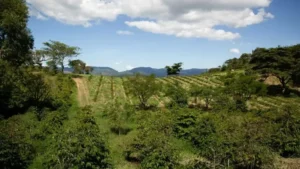
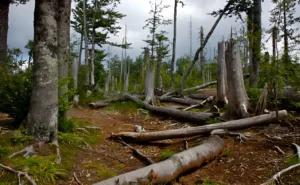
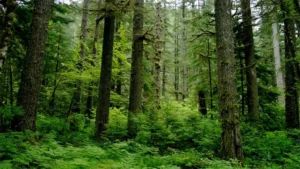
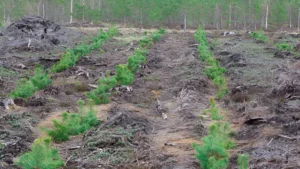
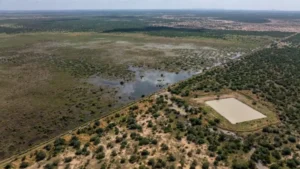

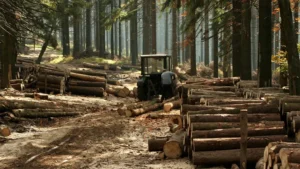


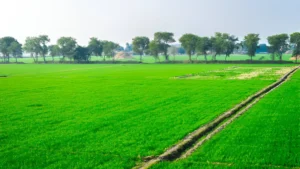

Leave your comment